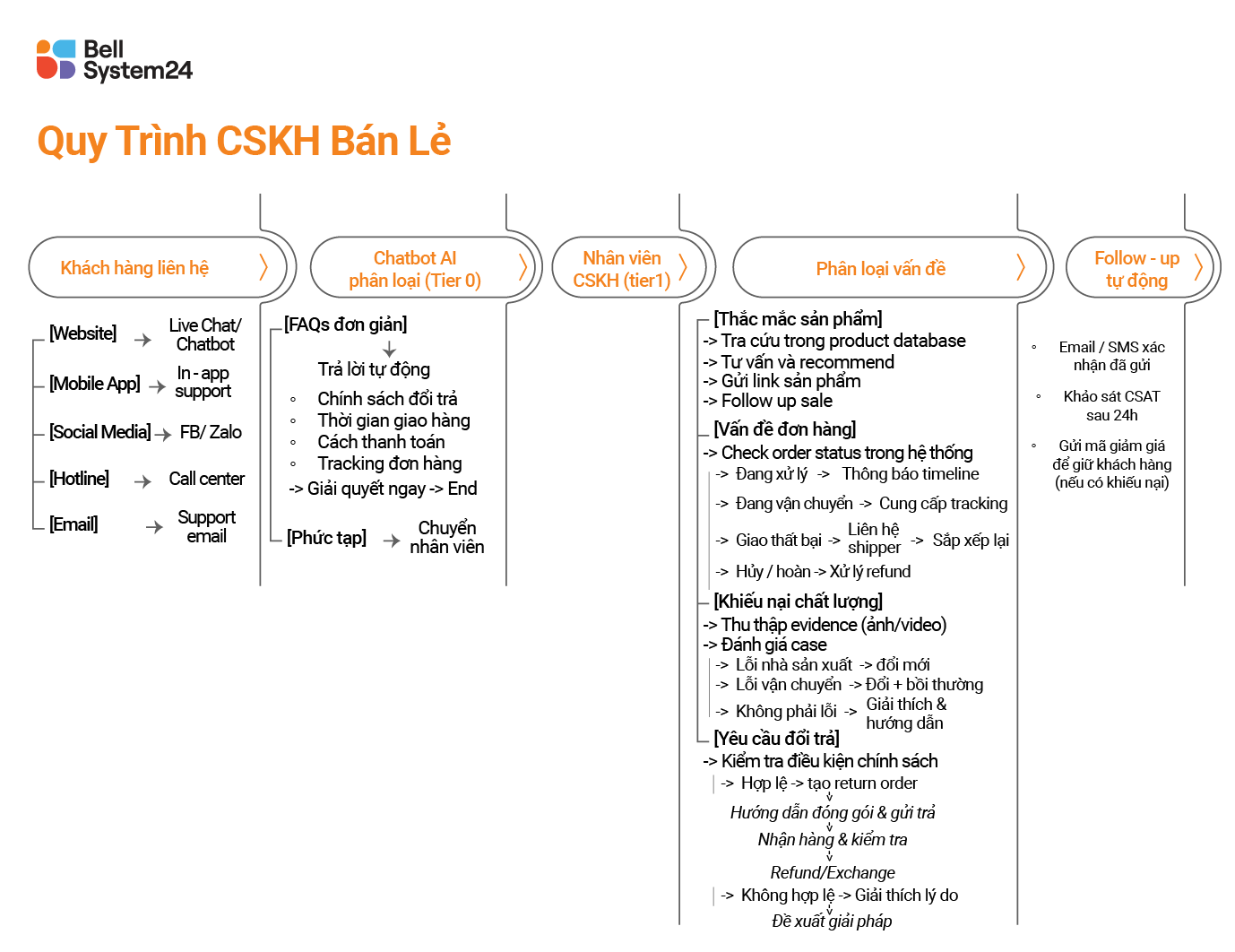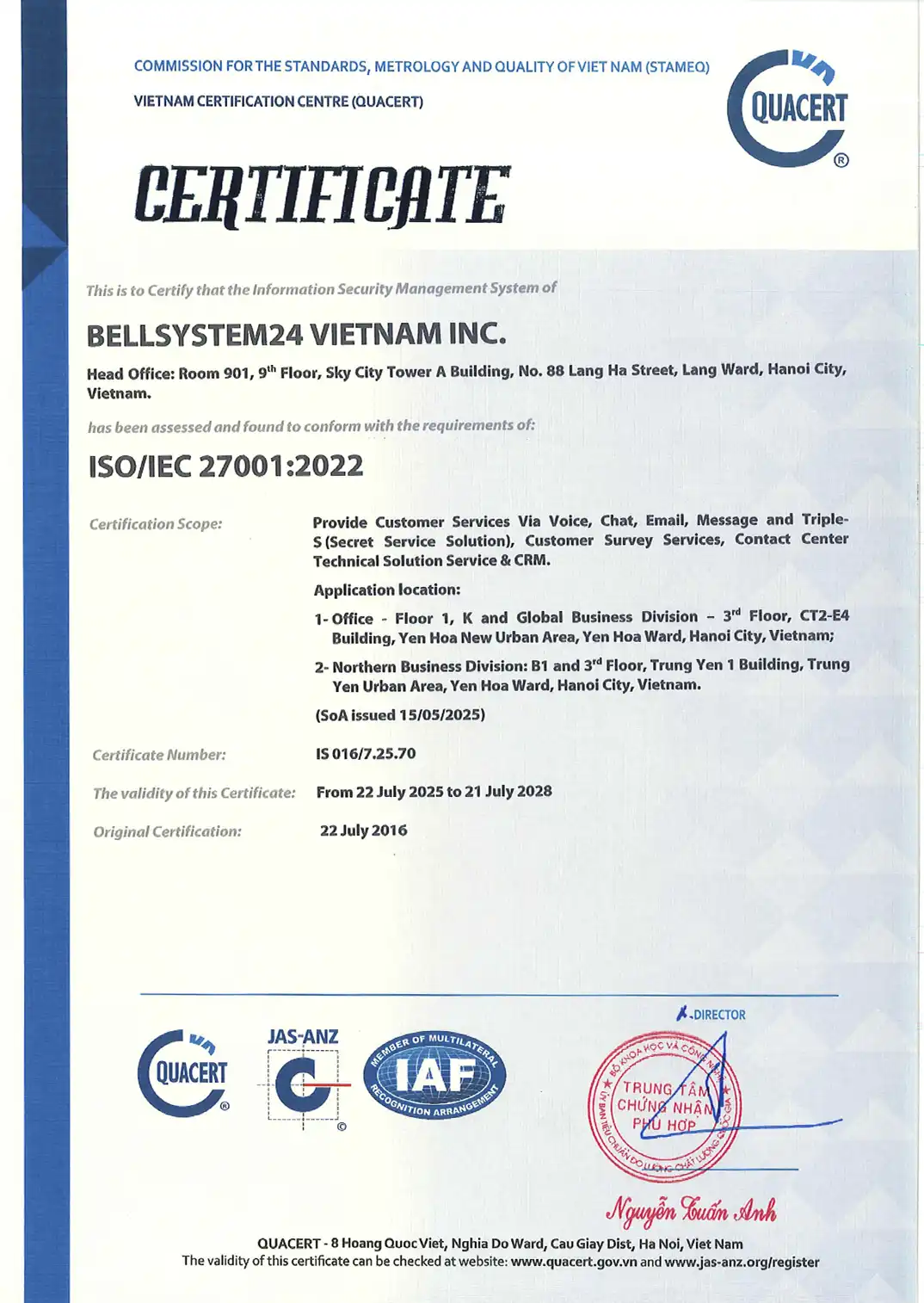Nowadays, customer service is not only limited to providing answers to consumer problems and questions, but also contributes to strengthening the image and conveying the message of the business to customers. In this article, we will clarify the concept. What is customer service?, customer care quality assessment indicators, as well as future development trends.
What is customer service?
Customer service: Service client, are the activities that businesses provide to customers. before, during and after purchase, helping customers have a complete, convenient and fulfilling experience.
The goal of customer service is to ensure satisfaction, thereby building brand trust and retaining customers. Therefore, ensuring service quality is very important if the business wants to develop sustainably.

There are three main stages in customer care:
Pre-sales, In-sales, After-sales.
Pre-Sales
Pre-sale customer service is the activities of supporting, consulting and taking care of customers before they decide to buy a product, including cases where customers are not aware of the product's needs. The goal of Pre-sale services is to suggest, provide information, answer customers' questions, create customer confidence in the product, thereby promoting the buying process.
Some popular pre-sales services:
- Send care and sales letters
- Receive customer requests
- Product, service and promotion consulting
- Send quote
- Happy call: Call to congratulate customers on their special day, including product suggestions.
- Product trial service
In sales.
Customer service in sales is the activities of supporting and consulting customers in the process of learning more about the product. The goal is to help customers have a clear understanding, feel comfortable in the buying process and have more confidence in the product.
Some popular sales services:
- Direct product and service consulting
- Send contract, confirm official quote
- Provide recommendations, warranty advice, delivery
- Handling issues related to payments and invoices
After sales
Is the service that a business provides to customers after completing the purchase and use of the product. The goal is to build trust and retain customers by helping them have the best user experience, ensuring that subsequent problems are quickly resolved.
Some popular after-sales services:
- Technical support, answering questions during use.
- Warranty service, repair, supply of replacement accessories.
- Return and refund service.
- Regular customer care, happy calls on special occasions
- Loyalty program
Many businesses today are focusing more on after-sales service and neglecting the previous two stages. It cannot be denied that after-sales service is very important, however, resources should be allocated appropriately for all three stages to optimize business efficiency.
See also: After-sales customer care saves 6 times the cost.
In the past, when it came to customer service, Companies often think of the solution through a call center. (Call Center)However, customer service today goes beyond that with a variety of communication channels such as email, website, text message or media.(Also known as Multi-channel switchboard)
Why is Customer service important to every business?
The core of “Customer service” is the customer experience.
According to the latest research by Gartner, 89% Companies today compete primarily on customer experience.
A report from the U.S. Small Business Administration found that 68% customers leave because they are unhappy with the treatment they have received. Once again, this report has affirmed the power of customer experience in business development as well as the important position of customer service.
What is good customer service?
Each business will have different goals, so a good customer service will steer the customer experience in a way that benefits the business, while also meeting the rational and emotional needs of the customer's mind.
Therefore, businesses need to be careful when operating customer care call centers to convey positive messages and enhance their competitiveness.

Must-have qualities of a customer service representative.
Business, especially the department call center To provide the best customer service, it is necessary to ensure at least the following 3 factors:
- Awareness of the business and its products
Customer service staff need to have a clear understanding of the business and the unique values that the product brings to customers. From there, they can provide customers with specific solutions to the problems they encounter, while also providing an overview of the business to shape and strengthen the brand in the hearts of customers.
-
Right attitude
This is key. Having the right attitude and respect for your customers is key to good customer service. Something as small as a smile or a friendly greeting can make a big difference in any situation.
-
Analytical and problem solving skills
Customer service can only be considered good when it fulfills its core function of solving problems while bringing satisfaction to customers.
Customer service metrics.
Within the limits of the article, we will give you the 2 most important groups of indicators for your reference:
1. Experience Metrics / X-DataTM
This is a group of indicators measuring customers' trust, emotions and feelings when using services and products. Include:
- Customer Satisfaction – CSAT)
- Customer Effort Score ( CES)
- Net Promoter Score – NPS)
- Social Media Monitoring (Social Media Monitoring)
Through this set of metrics, you can see the gaps between what you think is happening and what is actually happening. From there, you can easily build a balanced scorecard that helps you focus your efforts and resources in the most effective ways to achieve business results.
2. Operational Metrics / O-Data group.
Thanks to this group of indicators, you can evaluate the performance of your business. Customer service department. This group of indicators includes:
- First Response Time (Time to First Response – TFT)
- First call resolution rate (First Contact Resolution – FCR)
- Level of problem solving required from customers (Customer Ticket Request Volume)
- Average time to resolve issue (Average Ticket Handling Time – AHT)
Customer Service Trends
A customer-centric platform with tightly connected interactions, across multiple channels, and leveraging the power of market data, will be the trend that strongly influences the customer experience in the future.
Understanding this trend will help businesses increase their market coverage and anticipate customer and market needs. In the future, businesses can focus on doing well the following two customer care trends:

- Create an integrated omnichannel customer service experience (Omni-channel): As the Internet reaches its peak, every customer connection and interaction becomes more diverse, quick, easy and seamless contact will become a business's strength compared to competitors and leave a deep impression in the customer's mind at every point of contact.
- Artificial intelligence applications (WHO) to optimize automation, save resources, time, and finances. In the near future, AI will replace humans in many jobs, including some customer service jobs. Typical functions include: IVR, ACD,.. in Contact Center. Making good use of AI applications will be a revolution, bringing huge advantages in optimizing operational processes and providing fast, accurate experiences for customers.
However, there is one factor that AI will take a very long time to replace, and may never replace, humans in customer service as well as all aspects of life, which is "FEELING".







